

A quite extraordinary recital from these identical twins.To say they play as one would be too obvious but their sense of ensemble and musical understanding are so remarkable that there really is an alchemy that is their birthright. These two beautiful young ladies sit bolt upright listening to each other and without the score create a kaleidoscope of sounds as they truly play as one.
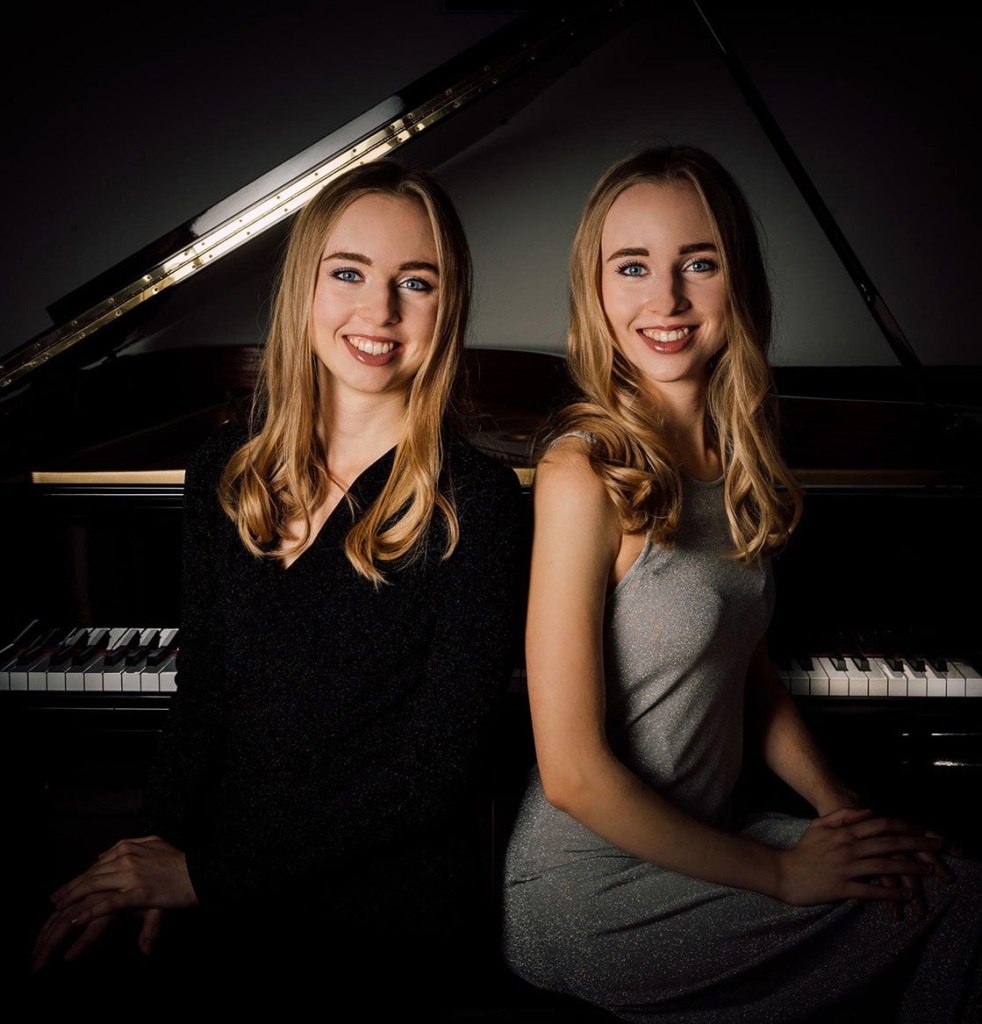
There was a fluidity and clarity to the opening of the Respighi and even the nursery rhymes quoted never interrupted the continual flow as they depicted these vivid ‘Pines of Rome’ with the same colours and excitement as an orchestra.Playing of mastery and breathtaking technical prowess.Even the deep meditative sounds and evocative bird calls showed a masterly control of the pedal as they listened so attentively to the overall line they were creating together with a deep concentration that seemed to exclude any physical movement.
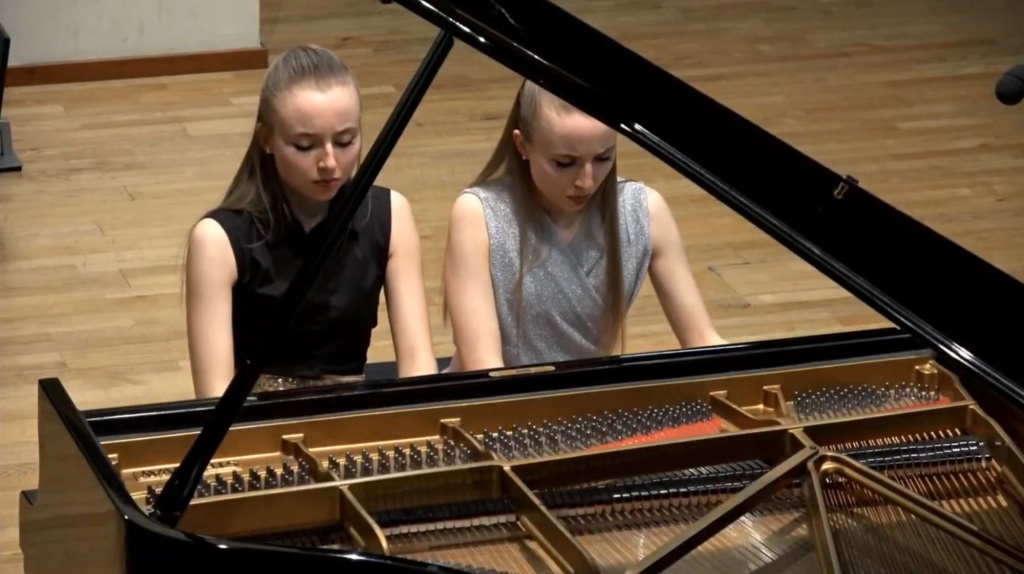
Swopping over for the Schubert but I have no idea who is who but I do know that the Schubert was of sublime beauty and sensitivity with the same perfect ensemble. An architectural understanding that held this long sonata movement as one glorious whole where the change to the major towards the end showed so poignantly Schubert’s sublime outpouring of mellifluous beauty. Pianississimo that was truly that and forte that was always with the long musical line in mind as they created a complete musical whole of great power and beauty.
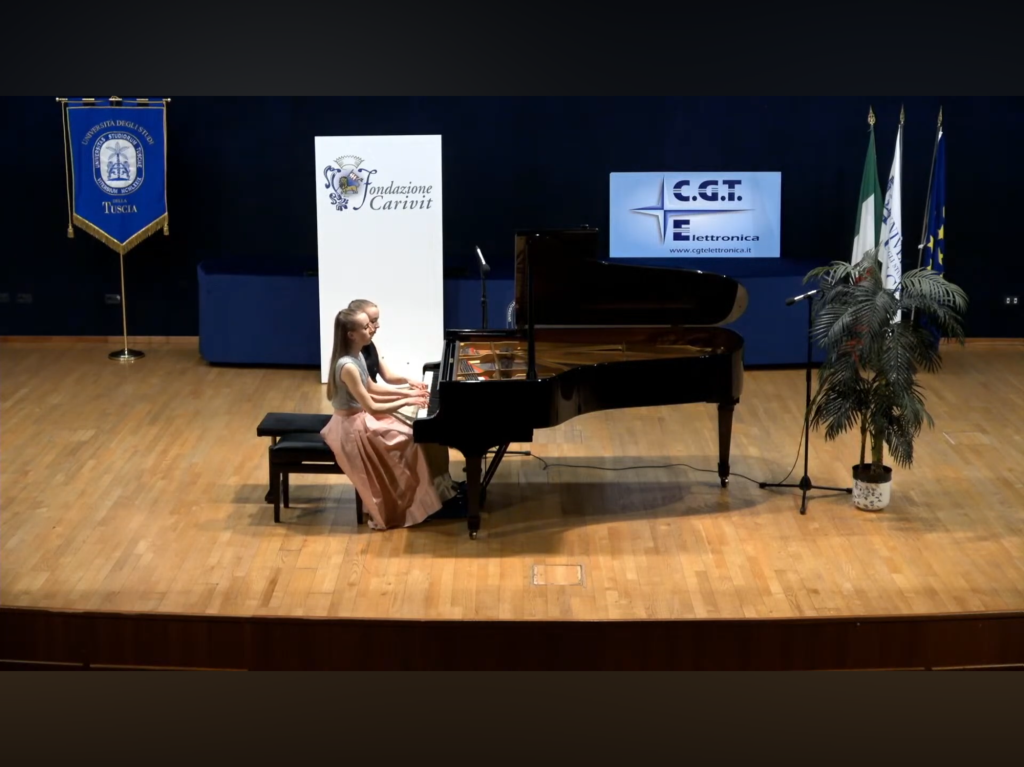
No change over for the Stravinsky that was given a quite remarkable performance and it is the first time I have heard it in this four hand version.There was all the vivid characterisation and sudden dynamic outbursts .The excitement they generated with the ‘Shrove Fair’ was the same they had shown at the end of the Respighi and it was breathtaking in it’s tonal control and gradual building of excitement.
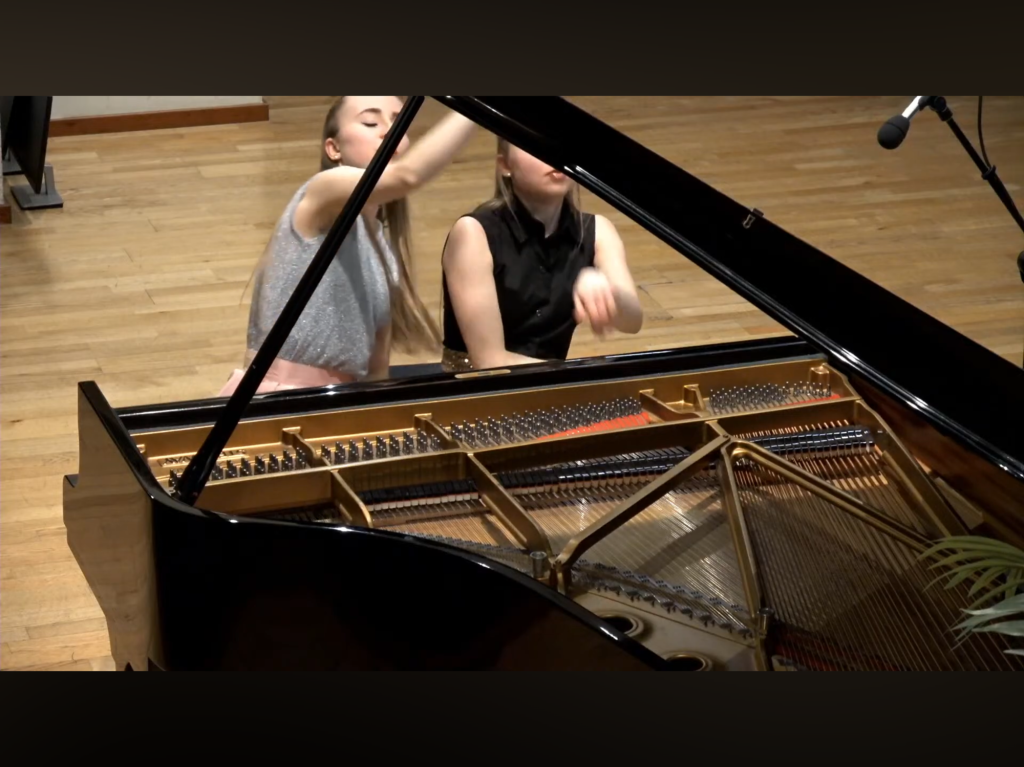
A quite remarkable duo and the only other team I know that play the four hand – two piano repertoire without the score are the Jussen brothers – not twins but obviously something in their genes like the two young ladies today.
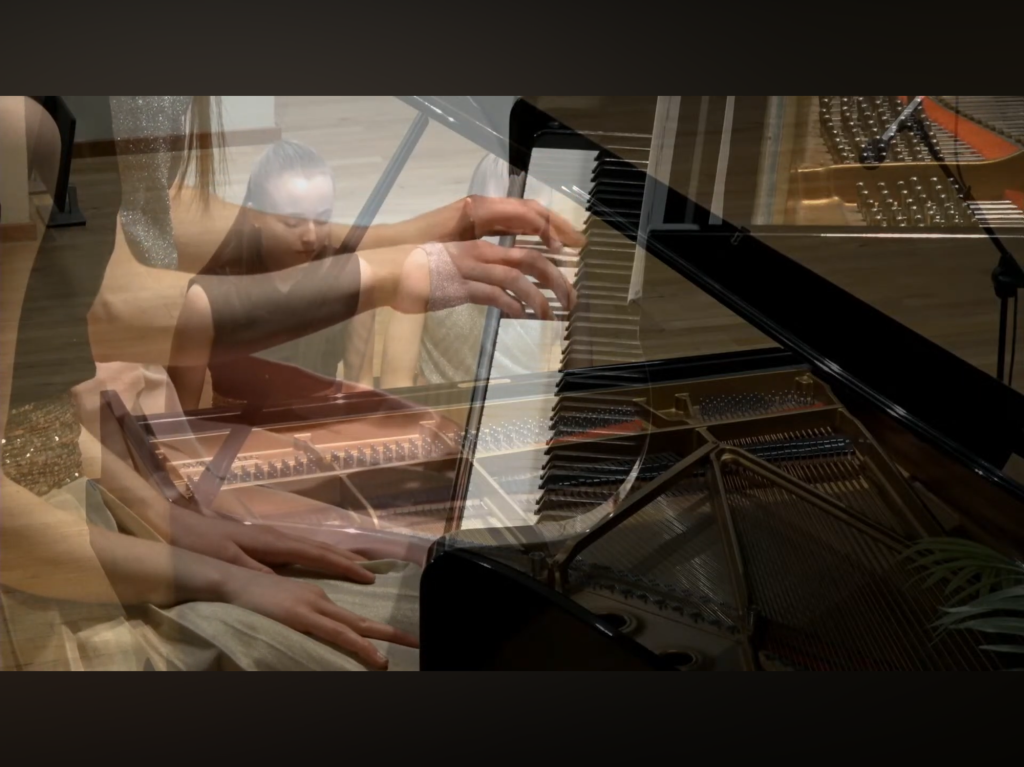
A beautiful Brahms waltz was offered as an encore and just showed their refined sense colour and stylistic mastery .

Beatrice and Eleonora Dallagnese began studying the
piano at the age of 4 under the guidance of M° Eleonora Mometti.
Their parents still recall the twin’s first recital with emotion: “Two pianists who played with their feet dangling because they couldn’t reach the floor”. From that first performance, Beatrice and Eleonora Dallagnese embarked on a path that to date has led to them being recognized as among the leading Italian female pianists, and seeing them perform in some of the most prestigious theatres.
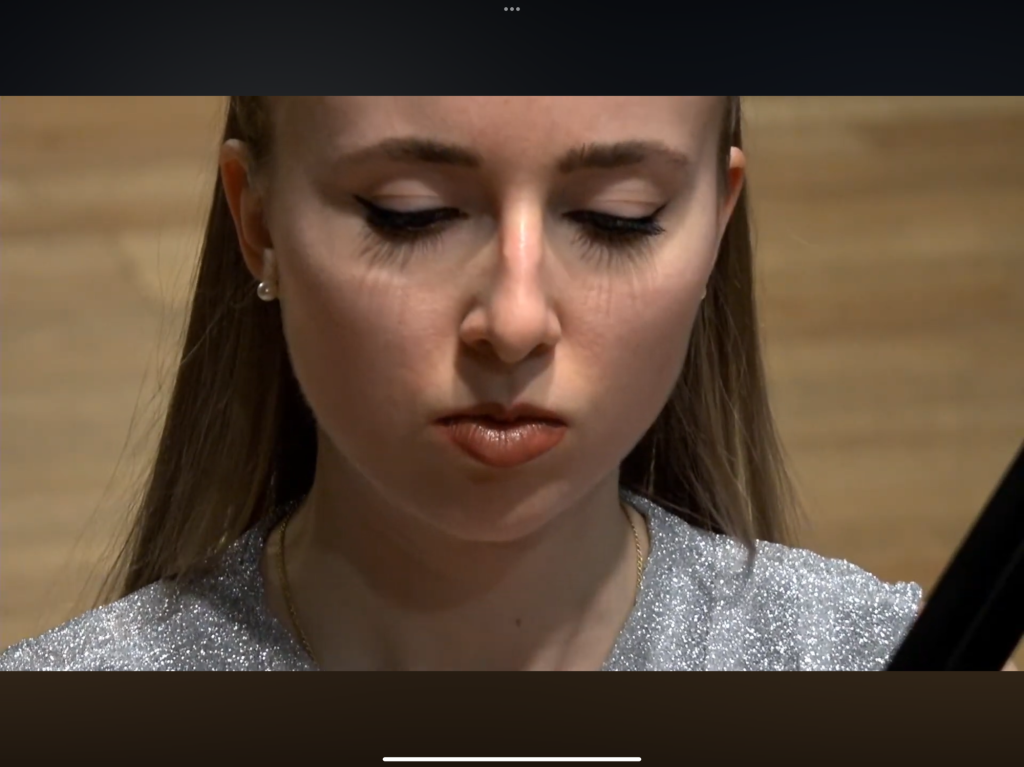
From playing their very first notes, thanks to the intuition of their teachers, they began to develop their distinctive technique as a duo that today places them among the leading Italian classical pianists. A technique which over time they have refined and perfected through the symbiosis so common to twins, whilst not detracting from their differences.
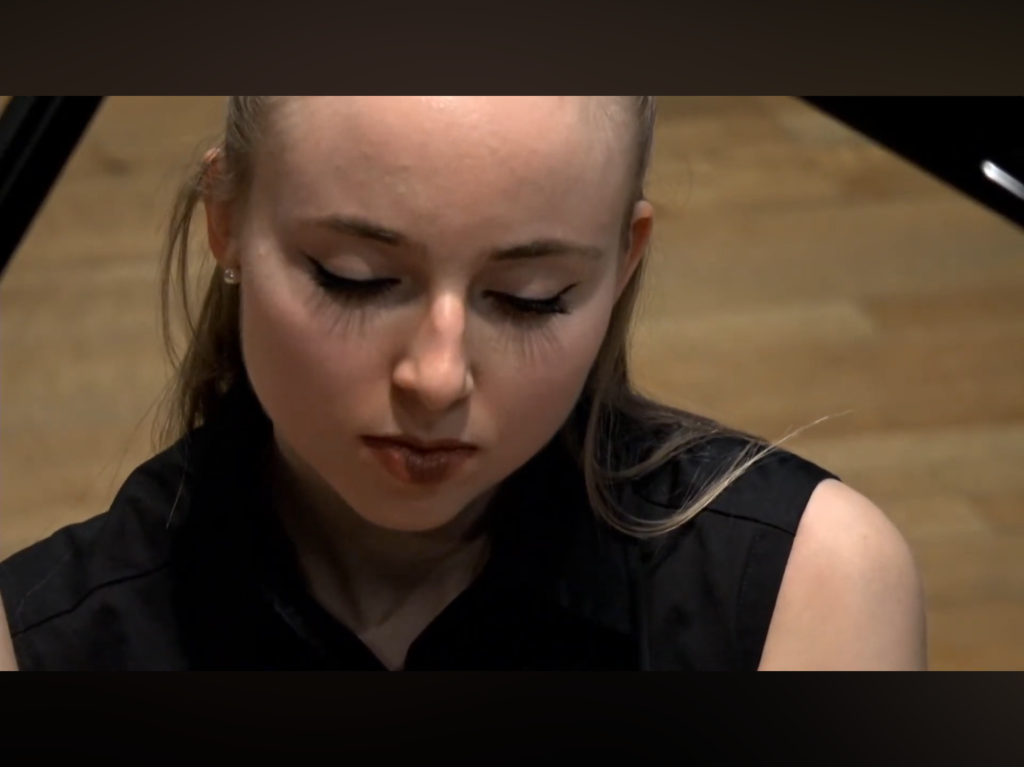
In 2015, they joined the International Piano Academy “Incontri con il Maestro” in Imola, founded by M° Franco Scala. They were instructed in piano by M° Stefano Fiuzzi and M° Ingrid Fliter, and by M° Nazzareno Carusi for their chamber music class. The educational path undertaken by Beatrice and Eleonora has allowed them to grow professionally with an international vision.

They continue their studies with M° Ingrid Fliter and M° Boris Petrushansky, whilst from 2015 also taking classes with M° Alberto Nosé.
In 2018 they graduated from the “C. Pollini ” Conservatory of Padua, both with full marks, praise and special mention.
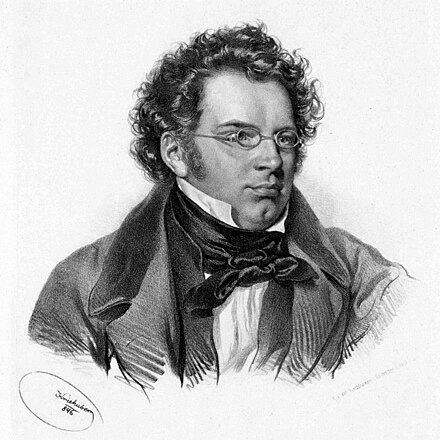
Franz Peter Schubert
31 January 1797, Himmelpfortgrund,Vienna
Died: 19 November 1828 (age 31 years), Vienna
The Allegro in A minor, D947 and the Rondo in A major, D951 were written in May and June 1828 respectively, and may well have been intended to form a two-movement sonata along the lines of Beethoven’s E minor Sonata Op 90. Rondo was published in December 1828, less than a month after Schubert died, but its A minor companion-piece did not see the light of day until 1840, when Anton Diabelli issued it under the heading of Lebensstürme (‘The storms of life)
Franz Schubert was one of the most prolific composers of ensemble piano music, and the Allegro in A Minor, Op. 144, demonstrates his mastery at writing for one piano, four hands. This large and passionate work was composed in 1828, the year of Schuberts death. It is written in sonata-allegro form and may have been intended as the first movement of a sonata. It was first published by Anton Diabelli in 1840 with the title Lebensstürme: Characterischeres Allegro (Lifes Storms: Characteristic Allegro). The Allegro makes extensive use of chromaticism, Neapolitan sixth chords, and contrasts of moods.

Ottorino Respighi
9 July 1879 Bologna , Italy. 18 April 1936 (aged 56). Rome, Italy
Pines of Rome (Pini di Roma), P 141 is a tone poem in four movements for orchestra completed in 1924 and is the second of his three tone poems about Rome following Fontane di Roma (1916) and preceding Feste Romane (1928) He completed I Pini di Roma in the summer of 1924, after he had “conceived, started and restarted” work on the piece in the course of several years. Having relocated from his hometown of Bologna to Rome in 1913, Respighi said that the city’s “marvellous fountains” and “umbrella-like pines that appear in every part of the horizon” were two characteristics that “[have] spoken to my imagination above all”.This influence resulted in the first of his three tone poems about Rome, the Fontane di Roma (1916), which brought him international fame.
The piece consists of four movements, for which Respighi wrote programmatic notes describing each scene:

- “I pini di Villa Borghese” (“The Pines of the Villa Borghese”) – Allegretto vivace This movement portrays children playing by the pine trees in the Villa Borghese gardens , dancing the Italian equivalent of the nursery rhyme “Ring a Ring o’Roses”and “mimicking marching soldiers and battles; twittering and shrieking like swallows”.[
- “Pini presso una catacomba” (“Pines Near a Catacomb”) – Lento In the second movement, the children suddenly disappear and shadows of pine trees that overhang the entrance of a Roman catacomb dominate.It is a majestic dirge, conjuring up the picture of a solitary chapel in the deserted Campagna; open land, with a few pine trees silhouetted against the sky. A hymn is heard (specifically the Kyrie ad libitum 1, Clemens Rector; and the Sanctus from Mass IX, Cum jubilo), the sound rising and sinking again into some sort of catacomb, the cavern in which the dead are immured. An offstage trumpet plays the Sanctus hymn. Lower orchestral instruments, plus the organ pedal at 16′ and 32′ pitch, suggest the subterranean nature of the catacombs, while the trombones and horns represent priests chanting.
- “I pini del Gianicolo” (“The Pines of the Janiculum”) – Lento The third is a nocturne set on the Janiculum Hill and a full moon shining on the pines that grow on it. Respighi called for the clarinet solo at the beginning to be played “come in sogno”(“As if in a dream”).The movement is known for the sound of a nightingale that Respighi requested to be played on a phonograph during its ending, which was considered innovative for its time and the first such instance in music. In the original score, Respighi calls for a specific gramophone record to be played–“Il canto dell’Usignolo” (“Song of a Nightingale, No. 2”) from disc No. R. 6105, the Italian pressing of the disc released across Europe by the Gramophone Record label between 1911 and 1913.[8] The original pressing was released in Germany in 1910, and was recorded by Karl Reich and Franz Hampe. It is the first ever commercial recording of a live bird.Respighi also called for the disc to be played on a Brunswick Panatrope record player.
- “I pini della via Appia” (“The Pines of the Appian Way”) – Tempo di marcia Respighi recalls the past glories of the Roman Empire in a representation of dawn on the great military road leading into Rome. The final movement portrays pine trees along the Appian Way in the misty dawn, as a triumphant legion advances along the road in the brilliance of the newly-rising sun. Respighi wanted the ground to tremble under the footsteps of his army and he instructs the organ to play bottom B♭ on the 8′, 16′ and 32′ organ pedals. The score calls for six buccine – ancient circular trumpets that are usually represented by modern flugelhorns , and which are sometimes played offstage.
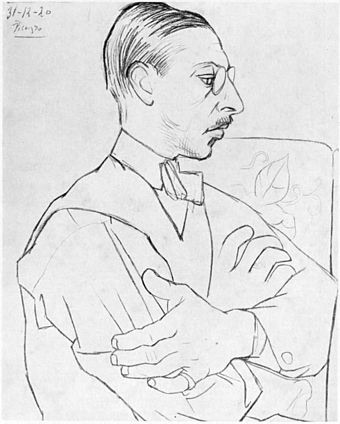
Igor Fyodorovich Stravinsky 17 June 1882 St Petersburg – 6 April 1971 New York was a Russian composer and conductor with French citizenship (from 1934) and United States citizenship (from 1945).
Stravinsky as drawn by Picasso in 1920
The meeting of Diaghilev and Stravinsky was inspired by a performance of the latter playing his piano version of Fireworks in 1909. Diaghilev commissioned him to write The Firebird, and although Stravinsky was 27 and unknown at this time, he still possessed the chutzpah to verbalize his reluctance to compose within constraints or to collaborate with set designer Alexandre Benois and choreographer Mikhail Fokine.
The Firebird, of course, was a huge success. But it was their second collaboration – Petrushka – that brought the pair its first multimedia success and freed Stravinsky to put his own stamp on Parisian musical life.
Unlike The Firebird, the idea for Petrushka was Stravinsky’s own. It had haunted him during the final weeks of revisions for Firebird, and when the project was finished he threw himself into the first sketches. Stravinsky wrote to his mother: “…my Petrushka is turning out each day completely new and there are new disagreeable traits in his character, but he delights me because he is absolutely devoid of hypocrisy.” Petrushka is a descendant of the commedia dell’arte Pulcinella, a clown representing the trickster archetype. He is playful, quarrelsome, mercurial, antiauthoritarian, naughty, but of course indestructible, which is the reason for his appeal. Other characters evolved: the Blackamoor, Petrushka’s nemesis and eventual murderer; the Ballerina, a Ballets Russes version of the commedia dell’arte Columbine – pretty, flirtatious, shallow, irresistible; and the Magician, who reveals Petrushka’s immortality.
The concert version of Petrushka comprises four tableaux – imagine scenes from a storybook come to life. The first tableau depicts the last days of Carnival, 1830, Admiralty Square, old St. Petersburg.
First tableau: The Shrovetide Fair the music opens with a bustling fair day: crowds and glittering attractions everywhere reflected in the constantly shifting rhythms and harmonies, and in orchestration that alternates and ultimately merges high winds and bell-like tones in piano with thrusting low strings, erupting into a fantastic, oddly accented full-orchestra fiesta. Two drummers appear outside a puppet theater, and a drum roll (a connecting device that runs throughout the work) knocks the crowd into pregnant silence. The Magican appears to the mesmerizing twists and turns of the orchestra, featuring an undulating, almost lurching, flute solo, and the sinister spell is cast. Petrushka is introduced with the other major connective device of the work: the “Petrushka Chord,” a tone cluster made of the major triads of C and F-sharp that weaves the work together both harmonically and melodically. Here we also meet the Ballerina and the Blackamoor, and the three together do a warped, angular, yet still quite folksy Russian dance.
Second tableau: Petrushka’s Room evokes Petrushka alone in a gloomy cell. Piano arpeggios accompany the puppet’s dreaming of freedom, which escalates to enraged cries in the trumpets and trombones. Solo flute re-enters with a flirty little tune, shifting the mood to portray the Ballerina, whom Petrushka loves. She will tease, but of course wants nothing to do with him.
Third tableau: The Moor’s Room Who the Ballerina really wants is the Blackamoor, the bad boy who is the center of the third tableau. A clumsy, banal tune played by solo winds and pizzicato strings, all sounding slightly out of sync with each other, accompanies their lovemaking. Petrushka crashes the party, and the Blackamoor chases him into the crowd.
Fourth tableau: The Shrovetide Fair (Toward Evening) after the music of the fair scene, the Blackamoor pursues Petrushka and murders him. The Magician realizes that Petrushka is a puppet, and when Petrushka’s ghost appears the Magician runs away scared; the recurring “Petrushka chord” gives the last laugh. Stravinsky later said he was “more proud of these last pages than of anything else in the score.”
Petrushka opened on June 13, 1911, at the Théâtre du Châtelet in Paris to overwhelming success. Conducted by Pierre Monteux, then 36, the performance was praised as a feat of sophisticated, intellectual theatrical folklorism.
During rehearsals for the 1911 premiere, Stravinsky and other pianists including Russian composer Nikolai Tcherepnin used a piano four hand version of the score. This has never been published, although Paul Jacobs and Ursula Oppens , among other pianists, have played it in concert.
In 1921, Stravinsky created a virtuosic and celebrated piano arrangement for Artur Rubinstein Trois mouvements de Patrouchka, which the composer admitted he could not play himself, for want of adequate left-hand technique.
Cremona Musica ….2023 Day 2 Angelo Fabbrini the crowned Prince of Cremona
